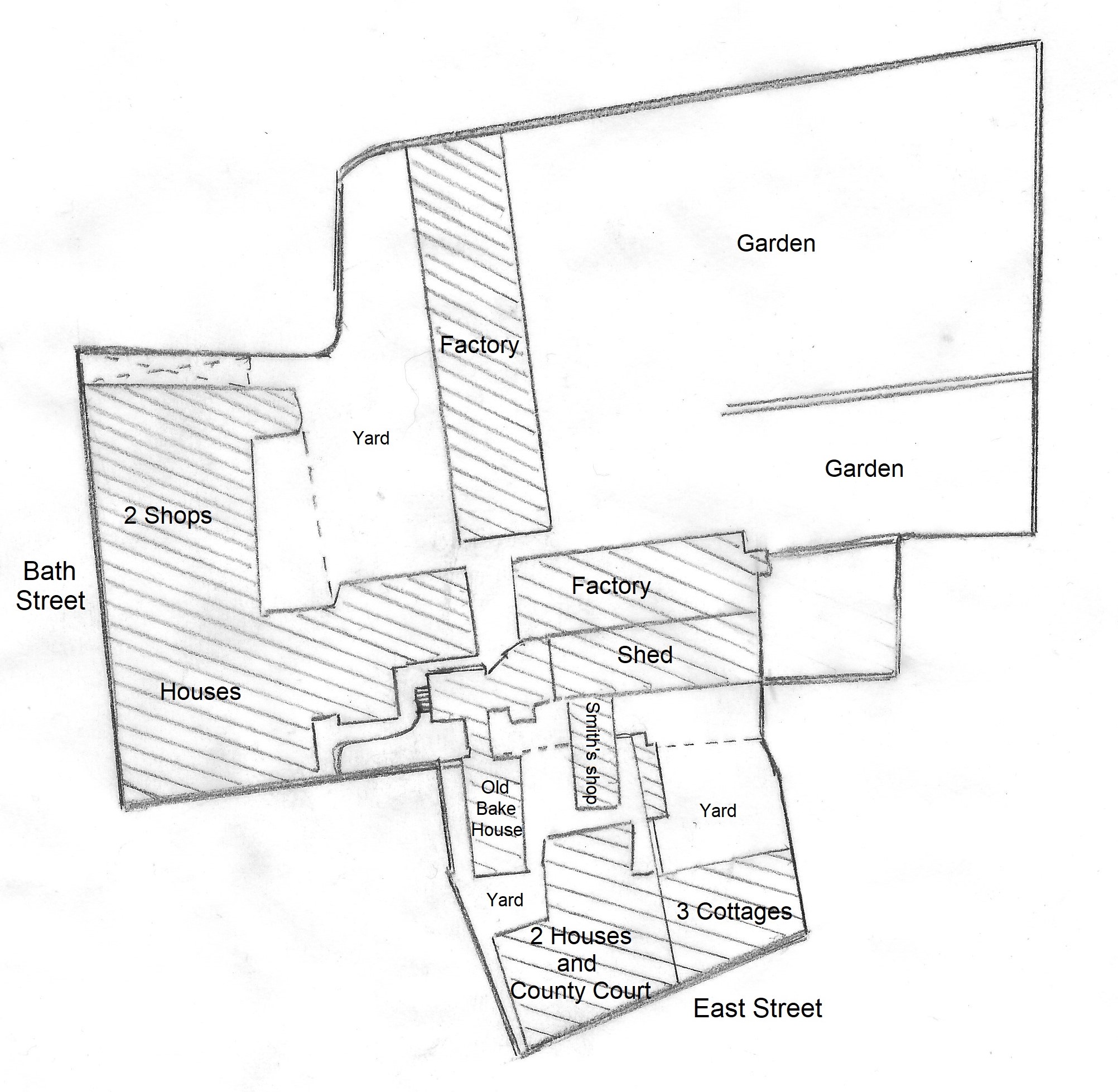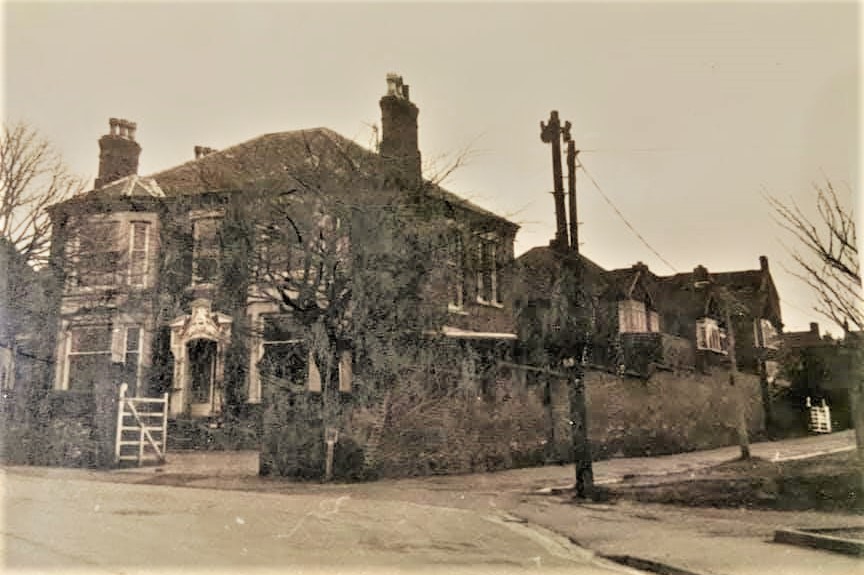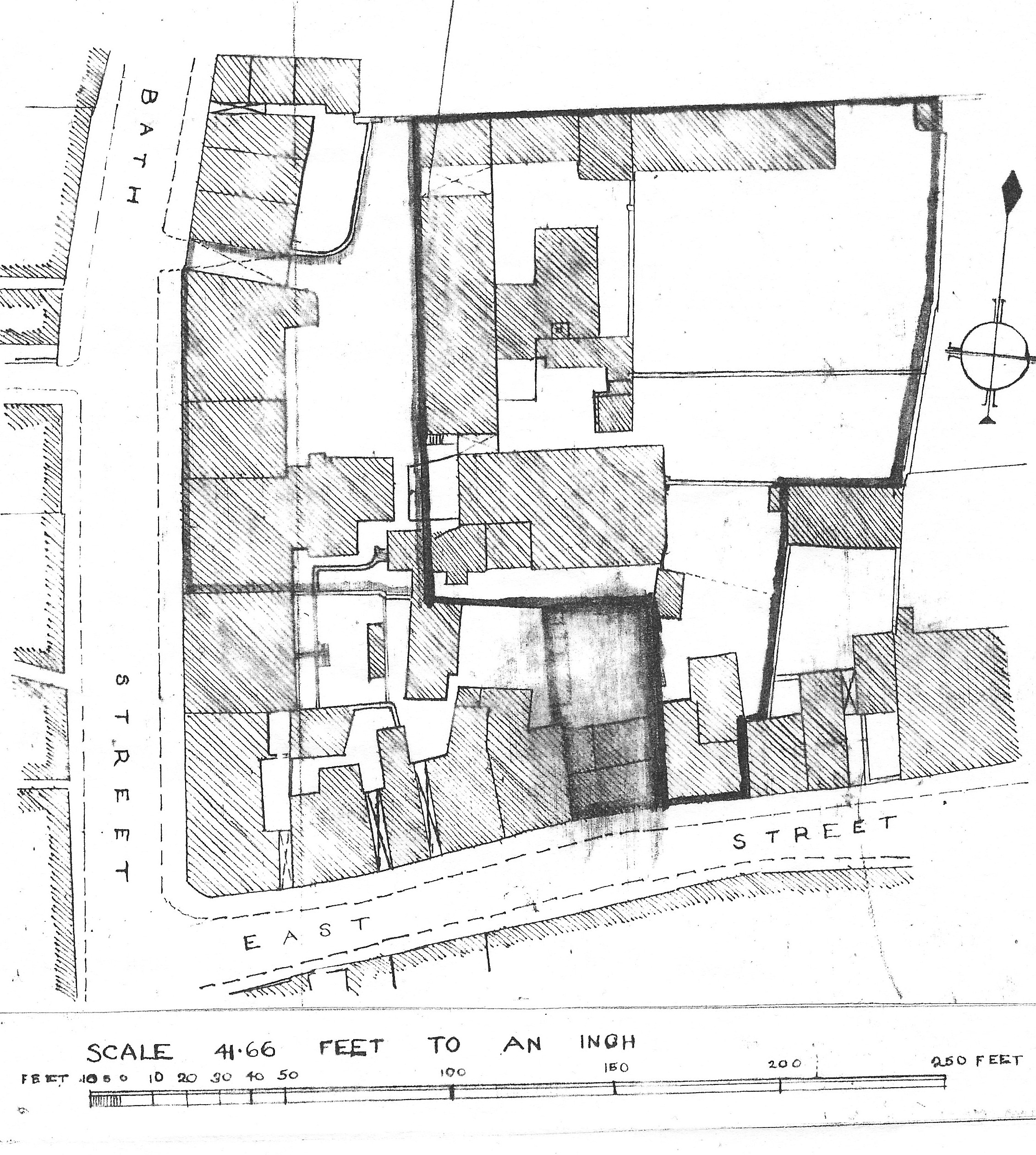.. and after Part 2
January 20th 1865 … Samuel Carrier died.
About 1872 … Joseph Carrier sold his property of Broad Meadow in Ilkeston to the Erewash Valley Iron Co. Ltd.
October 24th 1879 … Joseph Carrier died. In his will he left most of his estate to be divided between his wife Jane (nee Attenborough), his brothet Henry, and his brothers-in-law Isaac Attenborough and Edward Humphreys, husband of Sarah Attenborough. Both Isaac and Edward soon after renounced their bequests.
November 9th 1886 … Joseph Carrier junior, a grocer then trading in Bath Street, redeemed a mortgage, taken out by his uncle the late Samuel Carrier, and dated November 8th 1856. This mortgage had been on the two properties owned by Samuel in East Street, with their yard, a bakehouse, machine or smith’s shop, and other outbuildings. They can be seen at A on Plan 5 (in Part 2).
February 1898 … many premises of the Carrier Estate, belonging previously to the late Joseph Carrier, appeared together in the local press when they were put up for sale by auction. There were three shops at numbers 20, 18 and 16 Bath Street where painter Charles York, florist George Adams and tinman John Wallis Argyle (respectively) now traded. They were just north of the entrance to the Carrier Yard … both the entrance and the yard, totalling 901 square yards, were also up for sale. Further up Bath Street, towards the Market Place, was number 6, used as offices by solicitors Thurman, Cattle and Nelson, and its neighbour. And then round the corner where the Borough Arms stood, we find numbers 2 and 3 East Street, two shops where milk-seller George Barber and George Scattergood traded. Next in the list were numbers 4 and 5 East Street (one time the home of Adeline), one of them being the County Court Offices, with a yard and other buildings used by Jesse Handley and builder William Vincent Ireson. And then, continuing down East Street were numbers 6,7,8 and 9, with tenants bootmaker Alfred Henshaw, labourer Frederick Turton, George James Lacey and ‘Mr Shooter’.
Further afield, other Carrier properties were included in the sale. In Regent Street were numbers 2,3,4,5 and 6, while in Bright Terrace off Extension Street were numbers 1 to 6 inclusive. A similar row of the four Carrier houses which made up Queen’s Terrace, with their small gardens, were also offered for sale and were occupied by the Straw, Milner, Maxwell and White families.
Let’s now see what happened to all these premises (in order) when they went under the hammer on February 21st.
The three shops in Bath Street were sold to hairdresser Isaac Raynor, trading in Bath Street, for £1240. The building land in Carrier’s Yard remained unsold. The two properties used by Thurman, Cattle and Nelson did not reach their desired price at the auction but were later sold privately to their solicitor tenants for £1600. And then round the corner in East Street, the first two shops were sold to Frederick Henshaw for £716. The other six premises in that street were withdrawn. The five houses in Regent Street were bought by John Wheatley for £632 while the property in Bright Terrace wasn’t sold. The four houses in Queen’s Terrace were bought by George Beardsley of Shipley for £474.
On March 26th 1901, the Carrier premises (not sold in February 1898) came from Joseph Carrier junior, grocer and provision dealer then of 14 Bath Street, and via Moore and Robinson’s Nottinghamshire Banking Co. Ltd, into the hands of — Frances Alice Goddard, daughter of Joseph Carrier senior (deceased), sister of Joseph junior, and wife of William Foster Goddard, lace manufacturer of Stanton Road — and Henry Percy Carrier, lace manager of Cavendish Place, Beeston, youngest child of Joseph senior, younger brother of Frances Alice.
All these premises are shown in the following plan 9 dated March 26th 1901 and traced from a mortgage document of that date. You can see that the plan doesn’t feature the premises at the Bath Street/East Street corner which had been sold in February 1898.
Plan 9 showing the Carrier premises at March 26th 1901
——————————————————————————————————————————————-
Two days after this William Henry Carrier, elder brother of Frances Alice and Henry Percy, died at his home of Uplands in Burr Lane, seen below, fronting onto Burr Lane and with Albion Place by its right (north) side.
Perhaps it was this which prompted further ‘re-organisation’ of the Carrier property. On May 1st 1901, Frances Alice and Henry Percy agreed to mortgage the Carrier premises to William Thomas Cartwright, solicitor, and Walter Seymour, bootmaker, both of Nottingham. More detail about the property was given at that time, and should be compared with the plan above.
The two shops and houses shown fronting on to Bath Street contained three businesses, numbered 10, 12 and 14, belonging to John Ormond, solicitor, Henry Thompson, draper, and John Simpson Derbyshire, a tea merchant and confectioner of West Bridgford (although the 1901 census shows this as an unoccupied fishmonger’s business).
Behind these premises was a factory now in the occupation of ‘representatives of the late William Henry Carrier’. And behind that factory was the garden of John Ormond. To the south of that garden was another, tenanted by Henry Thompson. Between that last garden and the shops and houses fronting on to Bath Street was a factory, lean-to shed, a smith’s shop, all now in the hands of the representatives of William Henry Carrier; the factory was divided from the houses and shops by a passage way.
Fronting East Street were the three cottages numbered 6, 7 and 8, occupied (respectively) by bootmaker Alfred Henshaw, general labourer Frederick Turton, and bricklayer’s labourer George James Lacey. To their west side were the two dwellings numbered 4 and 5, one lately used as the County Court Offices but now occupied by coalminer Jesse Handley and builder William Vincent Ireson (respectively). Behind this last named house was the bakehouse, now unoccupied.
On the north side of these Carrier premises was property belonging to Isaac Raynor and the late William Henry Carrier; on the east side was the land of Robert Marshall and stone mason William Bailey; on the south was the same property of William Bailey, East Street, and property belonging to solicitors Cattle and Nelson; and on the west side was in part the land of Isaac Rayner, mentioned before, Bath Street, and in part by the land of Messieurs Cattle and Nelson, mentioned before, and finally by the property of Shipstone and Sons. (Guess what that property was)
October 19th 1903 … the same property as that described above in Plan 9 was conveyed from Frances Alice Goddard and Henry Percy Carrier to Nottingham lace manufacturer Gottlieb Hoffmann, and lace warehousemen brothers William and Robert Skeavington Green, born in Ilkeston but now working in Nottingham. Previously the latter three — on May 25th 1903 — had taken possession of the enfranchised house at number 9 East Street, then occupied by tenant George Scattergood. This had previously been occupied by Thomas Meakin and then by Charles Clarke.
On October 21st 1903 the three men mortgaged all this proprty to Frank James Doubleday, lace manufacturer.
On February 20th 1905 the Green brothers conveyed their holdings into the sole hands of Gottlieb Hoffmann.
A few months later — May 4th 1905 — Gottlieb Hoffmann mortgaged his premises to Ruth and Eve Sandy (Sanday or Sandys), spinsters of the Polygon, Southampton. Ruth died on August 26th 1905 and so — July 6th 1906 — a new mortgage was taken out between Gottlieb Hoffmann and Eve Sandy.
On November 1st 1907 there was a mortgage transfer between William Thomas Cartwright and Walter Seymor of the one part, to Frank James Doubleday, on the other part.
The Columbines return to Ilkeston
On July 17th 1908, for the sum of £850, Eve Sandy conveyed to William Brailsford Columbine, hosiery manufacturer of 14 Curzon Street, Nottingham all her Carrier property — that is all property in the above plan dated March 26th 1901 plus the house numbered 9 East Street, previously occupied by George Scattergood.
On November 13th 1908 Frank James Doubleday, lace manufacturer of Nottingham, conveyed unto William Vincent Ireson, building contractor of Ilkeston, the premises of 4 and 5 East Street, the latter where William and his wife Eleanor Holyoake (nee Riley) were living. Eleanor was the daughter of ‘Radical Richard‘ of Bath Street. The 1911 census shows that number 5 had eight rooms, including the kitchen, whereas number 4 had six rooms. The factory to the north of the premises was then in the hands of “Henry Carrier and Sons Ltd”, the firm’s address at this time being 14 Bath Street.
June 25th 1915 and the whole of the remaining property of Frank James Doubleday was conveyed to William Brailsford Columbine, hosiery manufacturer, now of Ilkeston. A plan made of the property at that date was almost identical to Plan 9 above. However you might just make out that the property now did not include numbers 4 and 5 East Street, but it did now include number 9.
Plan 10 copied from a re-conveyance of Carrier’s Farctory dated June 25th 1915
March 25th 1920 …. “Three shops and a dwelling house in Bath Street, now occupied by Henry Carrier and Sons Ltd., and used for the purpose of their business of hosiery manufacturers, the adjoining house now occupied by Mr. Beardsley and others as of fices, and the cottages in East Street with land in the rear adjoining the property of Mr. Ireson and other property of mine …. ” ….. Part of the Mortgage papers of William Brailsford Columbine to spinster Anna Sargeant of Old Colwyn
We will be back with the Carrier family when we arrive at East Street .. in the meantime, we will concentrate upon Joseph Carrier




